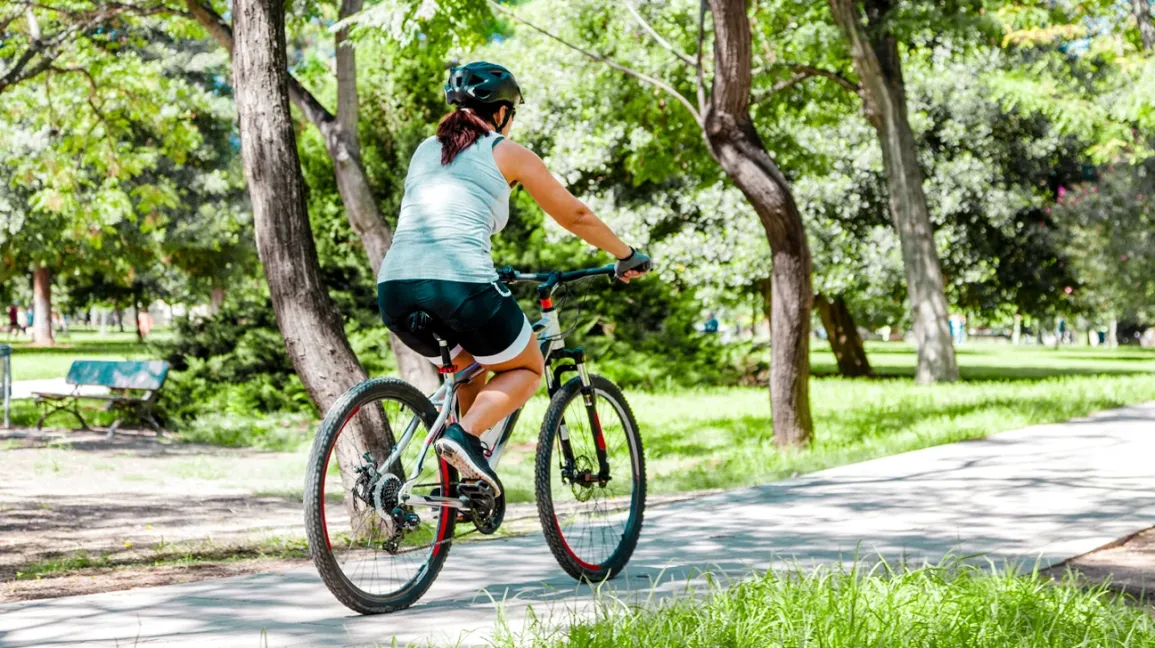I. Introduction

A. Introduce the topic of calorie burn comparison between walking and biking When it comes to calorie expenditure and weight management, physical activity plays a vital role. Walking and biking are two popular forms of exercise accessible to many people. This article explores the calorie burn and benefits of walking and biking to help individuals make informed choices about their fitness routines.
B. Highlight the importance of physical activity in calorie expenditure and weight management Regular physical activity is essential for maintaining a healthy weight and overall well-being. Engaging in exercises that burn calories can help create a calorie deficit, leading to weight loss or weight maintenance. Walking and biking offer convenient and effective ways to achieve these goals.
II. Factors Affecting Calorie Burn
A. Metabolic rate and individual characteristics Factors such as age, gender, body composition, and genetic factors influence an individual’s metabolic rate, which impacts the number of calories burned during exercise. Individuals with a higher metabolic rate tend to burn more calories during physical activity.
B. Intensity and duration of exercise The intensity and duration of exercise directly impact calorie expenditure. Higher-intensity activities generally burn more calories per minute compared to lower-intensity activities. Longer durations of exercise also contribute to increased calorie burn.
C. Terrain and environmental conditions The terrain on which physical activity takes place can affect the energy required and thus impact calorie burn. Walking or biking on flat surfaces requires less effort compared to uphill or uneven terrains. Environmental conditions, such as wind resistance or heat, can also influence calorie expenditure.
III. Walking: The Benefits and Calorie Burn
A. Overview of walking as a low-impact aerobic exercise
Walking is a low-impact aerobic exercise that provides numerous health benefits. It is accessible to people of various fitness levels and ages. Walking does not require any special equipment and can be done virtually anywhere.
B. Calorie burn during walking – factors influencing the rate
- Walking speed and intensity Walking speed and intensity directly affect calorie burn. Brisk walking or power walking at a faster pace will result in more calories burned compared to a leisurely stroll.
- Distance and duration of walking The distance and duration of a walk also impact calorie burn. The longer and more extended the walk, the higher the calorie expenditure.
IV. Biking: The Benefits and Calorie Burn
A. Overview of biking as a cardiovascular activity
Biking is an excellent cardiovascular workout that engages the muscles in the lower body, including the legs, glutes, and core. It offers a wide range of health benefits, such as improved cardiovascular fitness, reduced stress levels, and increased muscle strength.
B. Calorie burn during biking – factors influencing the rate

- Cycling speed and intensity The speed and intensity at which one cycles directly affect the number of calories burned. Cycling at a higher speed or engaging in interval training can significantly increase calorie expenditure.
-
Distance and duration of biking Similar to walking, the duration and distance covered during a biking session impact the calorie burn. Longer and more extended rides result in higher calorie expenditure.
V. Comparing Calorie Burn: Walking vs. Biking
A. Calorie burn per hour of walking
- Factors influencing the range of calorie burn When it comes to walking, several factors influence the range of calorie burn. These include body weight, metabolic rate, walking speed, and terrain. Generally, a higher body weight and faster walking speed tend to result in a higher calorie expenditure. Walking on a hilly or uneven terrain increases the workout intensity, leading to more calories burned.
- The impact of walking speed on calorie expenditure Walking speed directly affects calorie expenditure. The faster you walk, the more calories you will burn per hour. For example, a leisurely stroll may burn around 200-300 calories per hour, while brisk walking at around 4-5 mph can burn 300-500 calories per hour. Power walking or racewalking can increase the calorie burn even further.
B. Calorie burn per hour of biking

- Factors influencing the range of calorie burn Similar to walking, there are several factors that affect the range of calorie burn during biking. These factors include body weight, metabolic rate, cycling speed, and terrain. Generally, higher body weight, faster cycling speeds, and cycling on hilly or challenging terrains lead to greater calorie expenditure.
- The impact of cycling speed on calorie expenditure Cycling speed plays a significant role in the number of calories burned per hour. Cycling at a leisurely pace of 10-12 mph may result in a calorie burn of around 250-400 calories per hour. As the speed increases to 14-16 mph, the calorie expenditure can range from 400-600 calories per hour. Engaging in higher-intensity cycling, such as mountain biking or cycling sprints, can substantially increase calorie burn.
VI. Other Factors to Consider

A. Weight management and overall fitness benefits Both walking and biking contribute to weight management and overall fitness benefits. Regular participation in these activities can help with weight loss or weight maintenance, improve cardiovascular health, enhance muscular strength and endurance, and increase overall fitness levels.
B. Individual preferences and personal circumstances Choosing between walking and biking ultimately depends on individual preferences and personal circumstances. Factors such as fitness level, joint health, accessibility of biking routes or walking trails, time availability, and preference for indoor or outdoor activities all play a role in determining which activity may be more suitable.
C. Combining walking and biking for optimal results Combining walking and biking in a fitness routine can provide a well-rounded approach to physical activity. Periods of walking can help with recovery or low-intensity workouts, while biking can provide higher-intensity cardio sessions. Mixing activities can prevent boredom, target different muscle groups, and help maintain a consistent exercise routine.
VII. Conclusion
In conclusion, both walking and biking offer numerous health benefits and contribute to calorie burn and overall fitness. The number of calories burned per hour depends on various factors, including body weight, metabolism, speed, and terrain. Generally, higher intensities or speeds result in greater calorie burn. However, individual preferences, accessibility, and personal circumstances should also be considered when choosing between walking and biking. Combining different activities can provide a well-rounded fitness routine. Whether you choose to walk, bike, or a combination of both, regular physical activity is key to maintaining a healthy lifestyle and achieving your fitness goals.

